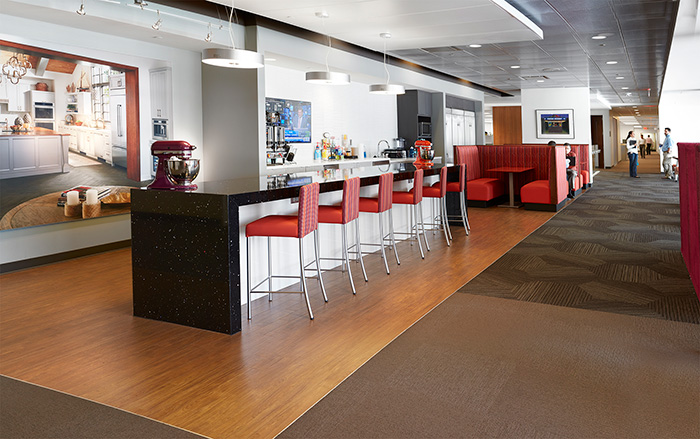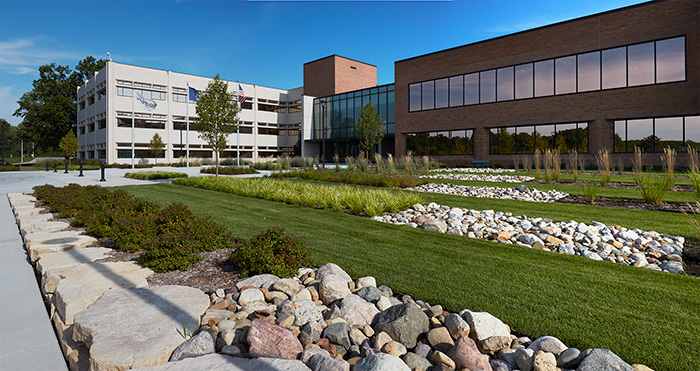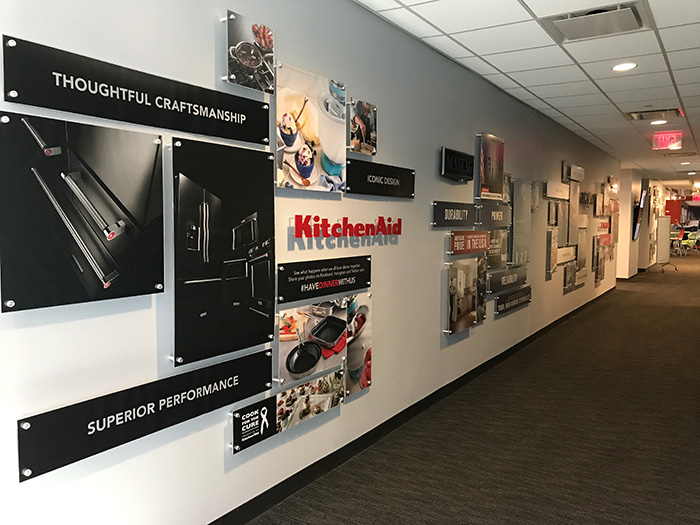 Whirlpool Corporation has been awarded a prestigious LEED® Certification for two of its recent building projects, both located in Benton Harbor, Mich.
Whirlpool Corporation has been awarded a prestigious LEED® Certification for two of its recent building projects, both located in Benton Harbor, Mich.
Riverview Campus, the North American Region Headquarters, is now LEED® Gold certified for Phase 3 of its development, and the Global Headquarters is LEED® Silver certified for the South and East wings of the building. LEED®, or Leadership in Energy & Environmental Design, is a globally-recognized symbol of excellence in green building. These are the 14th and 15th LEED-certified projects for Whirlpool since 2009, with all projects now totalling more than 9.4 million sq. ft.
“Being awarded additional LEED® Certifications is validation of our long-held belief that sustainability is not just important for our business, but a responsibility on behalf of our consumers,” said Lee Utke, Senior Director of Global Corporate Real Estate. “Each project represents a continuation of our commitment to designing, constructing, and/or remodeling buildings using sustainable practices.”
 Developed by the U.S. Green Building Council (USGBC), LEED® is the foremost program for buildings that are designed, constructed, maintained, and operated for improved environmental and human health performance. In the Whirlpool projects, restroom faucets with ultra low-flow valves and toilets were designed to reduce water usage. When compared to the minimum baseline established by the Energy Policy Act of 1992, the fixtures’ performance results in an estimated 40 percent water savings for both facilities, approximately 1071-thousand gallons of water at the Riverview Campus, and approximately 697-thousand gallons at the Global Headquarters. Energy efficiency was also a priority, with the Riverview Campus taking an integrated, whole campus approach. The facility was designed around a central plant heating and cooling system with a building management system, and incorporates high-efficiency interior and exterior lighting.
Developed by the U.S. Green Building Council (USGBC), LEED® is the foremost program for buildings that are designed, constructed, maintained, and operated for improved environmental and human health performance. In the Whirlpool projects, restroom faucets with ultra low-flow valves and toilets were designed to reduce water usage. When compared to the minimum baseline established by the Energy Policy Act of 1992, the fixtures’ performance results in an estimated 40 percent water savings for both facilities, approximately 1071-thousand gallons of water at the Riverview Campus, and approximately 697-thousand gallons at the Global Headquarters. Energy efficiency was also a priority, with the Riverview Campus taking an integrated, whole campus approach. The facility was designed around a central plant heating and cooling system with a building management system, and incorporates high-efficiency interior and exterior lighting.
A waste-reduction plan was enacted during the construction process of all three phases for each building, resulting in thousands of tons of waste diverted from landfills at the Riverview Campus and Global Headquarters – 94 percent and 57 percent of total construction waste, respectively. At the Riverview Campus, materials containing recycled content constitute 31 percent of the total cost of materials, which included drywall, carpet in the office, steel columns, and concrete in the floor slabs and exterior site.
 Both buildings maximize open space, with more than 111-thousand square feet of open space at the Riverview Campus, and nearly 284-thousand square feet of outside vegetated green space at the Global Headquarters. Open space helps reduce heat island effect, increases stormwater infiltration, and provides individuals on the site with a connection to the outdoors, a feature proven to increase employee productivity and satisfaction.
Both buildings maximize open space, with more than 111-thousand square feet of open space at the Riverview Campus, and nearly 284-thousand square feet of outside vegetated green space at the Global Headquarters. Open space helps reduce heat island effect, increases stormwater infiltration, and provides individuals on the site with a connection to the outdoors, a feature proven to increase employee productivity and satisfaction.
Both facilities promote alternative transportation methods to reduce the organization’s overall carbon footprint. Bike stations and bus routes are available to employees, as well as several electric car charging stations. Whirlpool Corporation has also set aside several dozen priority parking spots for low-emitting and fuel-efficient vehicles.
Whirlpool Corporation’s commitment to sustainability continues beyond the completion of construction. Whirlpool Corporation’s Riverview Campus will serve as an example of green building practices and as a tool to inform and educate consumers and other companies.
About LEED® Certification
LEED certification ensures electricity cost savings, lower carbon emissions and healthier environments for the places we live, work, learn, play and worship. LEED’s global sustainability agenda is designed to achieve high performance in key areas of human and environmental health, acting on the triple bottom line – putting people, planet and profit first.
LEED credits are awarded by third-party technical reviewers; are applicable to all building types throughout a building’s lifecycle; and are developed through several rounds of public comments and in collaboration with the U.S. Green Building Council’s (USGBC) board, broader membership and staff.